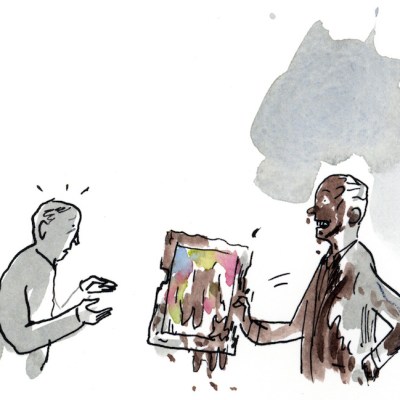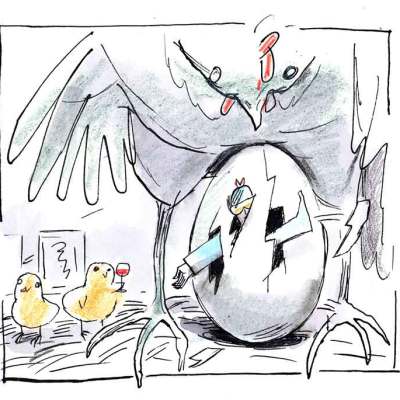The job of managing an artist’s reputation is now big business, with many estates operating along increasingly professional lines. How far should they seek to control public perceptions of an artist’s life and work?
Christa Blatchford
As a foundation we differ from estates in a number of ways. For one thing neither myself nor my team personally knew Joan Mitchell, nor are we related to her. As a US-based foundation, we have clear responsibilities relating to our charitable purposes; for Mitchell’s collection to be viewed as a charitable asset it needs to be used for the public interest – this includes loaning work for exhibition and making it available for study. Our charitable purposes also include Joan Mitchell’s wish that the foundation directly support visual artists. A portion of our annual operating budget goes towards such programming, including grants, educational opportunities, support to older artists on archiving and inventorying their work and, more recently, the inauguration of a new artist residency programme based in New Orleans.
As Mitchell’s reputation evolves, so does our work as custodians of her legacy. I am particularly interested in ensuring that the narratives surrounding Mitchell’s life and work do not become stagnant or caught up in specific contexts: the focus on her work from the late 1950s in relation to Abstract Expressionism, for example, tends to eclipse the work she made later in her career. We are deliberately providing more access to our collection and archives, as well as actively expanding our support of scholarly research.
In 2015, we formed the Joan Mitchell Catalogue Raisonné Project in the hope that increased knowledge about Mitchell’s oeuvre will lead to new scholarship, and a greater appreciation of her life and work. In 2018, as the culmination of our current archival processing project, we will open our archives to scholars in a newly created setting. We also plan to launch a research fellowship programme to encourage new scholarship on less understood aspects of Mitchell’s work, including her drawings and prints. As the organisation responsible for overseeing image permissions and copyright for Mitchell’s artwork, we don’t charge licensing fees; high-quality and accurate images of her work should be available for scholarly use without financial impediment.
I have worked to strengthen our relationship with museums nationally and internationally, ensuring that the foundation is known as a resource because of our collection, archives, and knowledge. Many new artist-endowed foundations and estates partner with galleries in similar ways. Yet while the gallery and museum worlds have grown closer over the last decade, it is the role of foundations – and also estates – to act as a mediator, to have a more objective voice not motivated by the commercial art market. For example, we might encourage scholarly research and museum exhibitions on Mitchell’s works on paper rather than, say, focusing on the paintings which are of more value. Although we must pay attention to Mitchell’s reputation in the commercial art market, as a foundation we cannot and should not try to control it. It is crucial to maintain open lines of communication with commercial galleries and auction houses. Since we do not authenticate, it is essential that we serve as a resource for the field on issues such as provenance.
In a recent review of a group show that included paintings by Mitchell, the author stated (incorrectly) that Mitchell was relatively unrecognised until after her death. Although it is true that her reputation has grown in recent years, Mitchell had very significant solo exhibitions during her lifetime. In response, we wrote a letter to the editor outlining Mitchell’s exhibition history and our concerns that such sweeping judgements were made without factual support. It is our role to ‘protect’ Mitchell’s reputation; any judgements should be based on research and fact – we strive to provide writers with accurate information.
There are, of course, grey areas around biography. Yet it is not our role to control these narratives, but to ensure there is opportunity for larger perspectives. I repeat that to nurture an artist’s reputation one has to be open, to support new readings of an artist and her work. For us, new initiatives – such as a research fellowship that focuses on Mitchell’s drawings – provide exciting ways forward.
Christa Blatchford is CEO of the Joan Mitchell Foundation.
Loretta Würtenberger
In the 21st century, artists’ estates have developed into recognisable, important entities within the art world. Forward-looking artists’ estates increasingly act with the professionalism the entrusted legacy demands, no matter how they are formed – whether privately managed or institutionalised as artist-endowed foundations. They have a clear agenda in their interactions with museums, academia, and the art market. This trend towards the more expert organisation of estates is a positive step forward, and effectively benefits those artists whose reputations are being managed.
The US has played a lead role. Encouraged by the commercial success of post-war American artists such as Pollock, Lichtenstein, and Warhol, US artist-endowed foundations have set the benchmark for the up-to-date administering of an artists’ estate. Most are organised as professionally-led entities with specific strategies, solid financial planning, permanent members of staff, extensive advisory boards – and are managed accordingly. They act with the understanding that they are entitled to have a say alongside the more traditional art world players – artists, art schools, curators, critics, museums, galleries, and auction houses.
The organisational capacities of ‘industry leaders’ such as the Robert Rauschenberg Foundation, Joan Mitchell Foundation, or Judd Foundation, has rubbed off on all forms of estate management to the extent that smaller estates, often run by a single family member, are also becoming more independent and self-conscious. Such independence – from inventory management and catalogue raisonné projects, to the interaction of artists’ estates with the art market – is evolving and thus influencing all sectors of the art world.
Many artists’ estates have developed strategies for dealing with this commercial aspect. They allow art dealers to pitch for the estate in order to get the best terms and often do not limit themselves to single market representation: the Robert Rauschenberg Foundation, for example, which acquired the assets of Rauschenberg’s estate in 2012, switched representation of the artist in 2015 from Gagosian Gallery to Pace Gallery, Galeria Luisa Strina, and Galerie Thaddaeus Ropac. Additionally, artists’ estates have become more self-reliant in relation to the secondary market – for example, repurchasing artworks for the estates’ core collection, for gifting or even profit-making purposes.
The professionalisation of artists’ estates is on the rise and set to continue; likely this will expand according to the developing fortunes of the art market’s top artists, such as Koons, Baselitz or Hirst, and the success of younger generations of artists. There is a huge number of wealthy artists working today; as such, they are in a position to finance organisations that will protect their legacies for a long time. Europe will eventually catch up with the US, although a number of forerunners in the field are already visible: the longstanding Henry Moore Foundation; David Hockney and Tony Cragg have established foundations; and Gerhard Richter is co-financing his eponymous archive at the Staatliche Kunstsammlungen Dresden. Smaller estates will, indeed have to adapt.
Professionalisation does not happen automatically, or error-free, and so institutions like the Institute for Artists’ Estates serve to assist living artists and artists’ estates in legacy planning and management. The goal is to guide them in an increasingly professional, competitive art environment. It is crucial that such organisations act as a state-of-the-art ‘guardian of soul’ for the respective artist, reminding the world of the artist’s aim – an aim beautifully expressed by the artist Felix Gonzalez-Torres: ‘Above all else, it is about leaving a mark that I existed: I was here. I was hungry. I was defeated. I was happy. I was sad. I was in love. I was afraid. I was hopeful. I had an idea and I had a good purpose and that’s why I made works of art.’
Loretta Würtenberger is the director of the Institute for Artists’ Estates,
and author of The Artist Estate: A Handbook for Artists, Executors, and Heirs (Hatje Cantz, 2016).
From the February issue of Apollo: preview and subscribe here.


